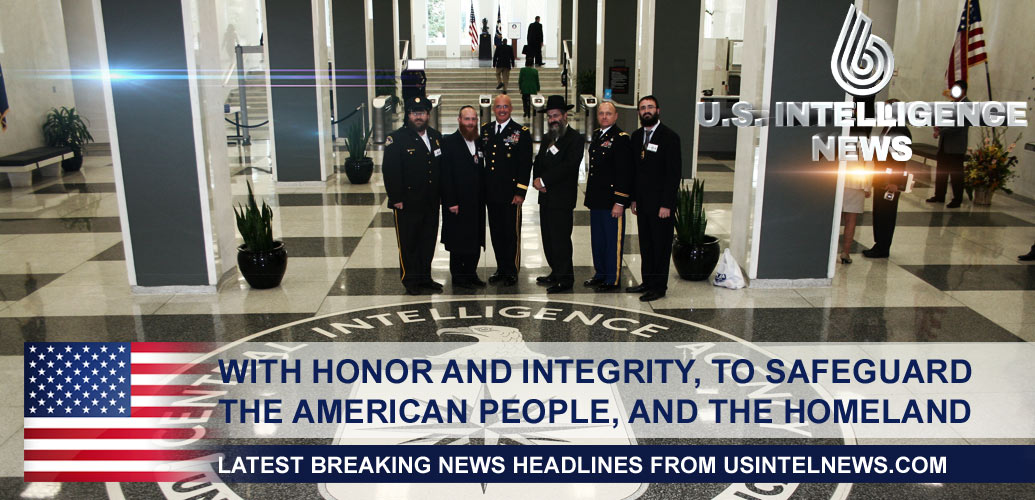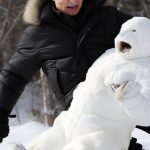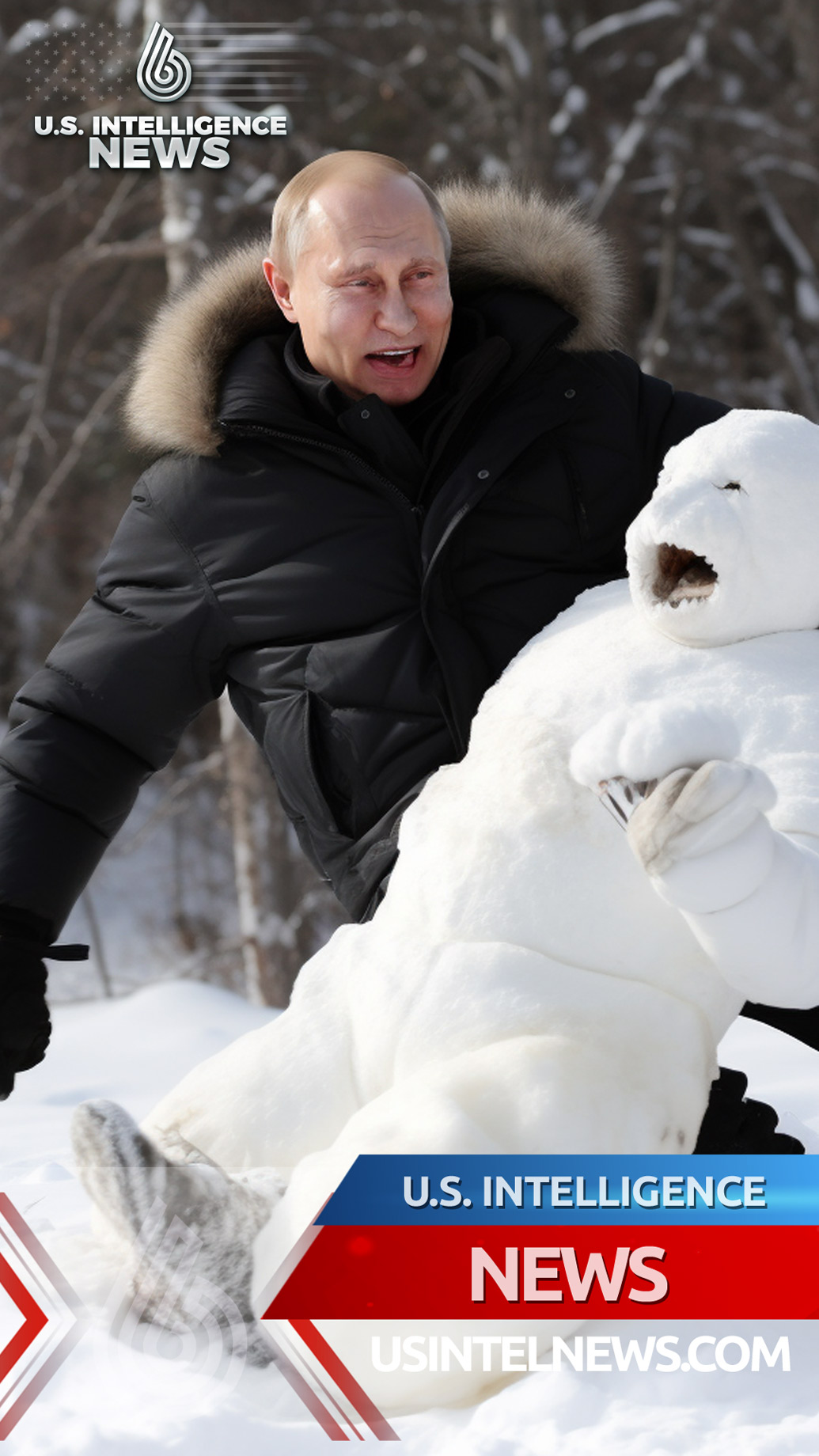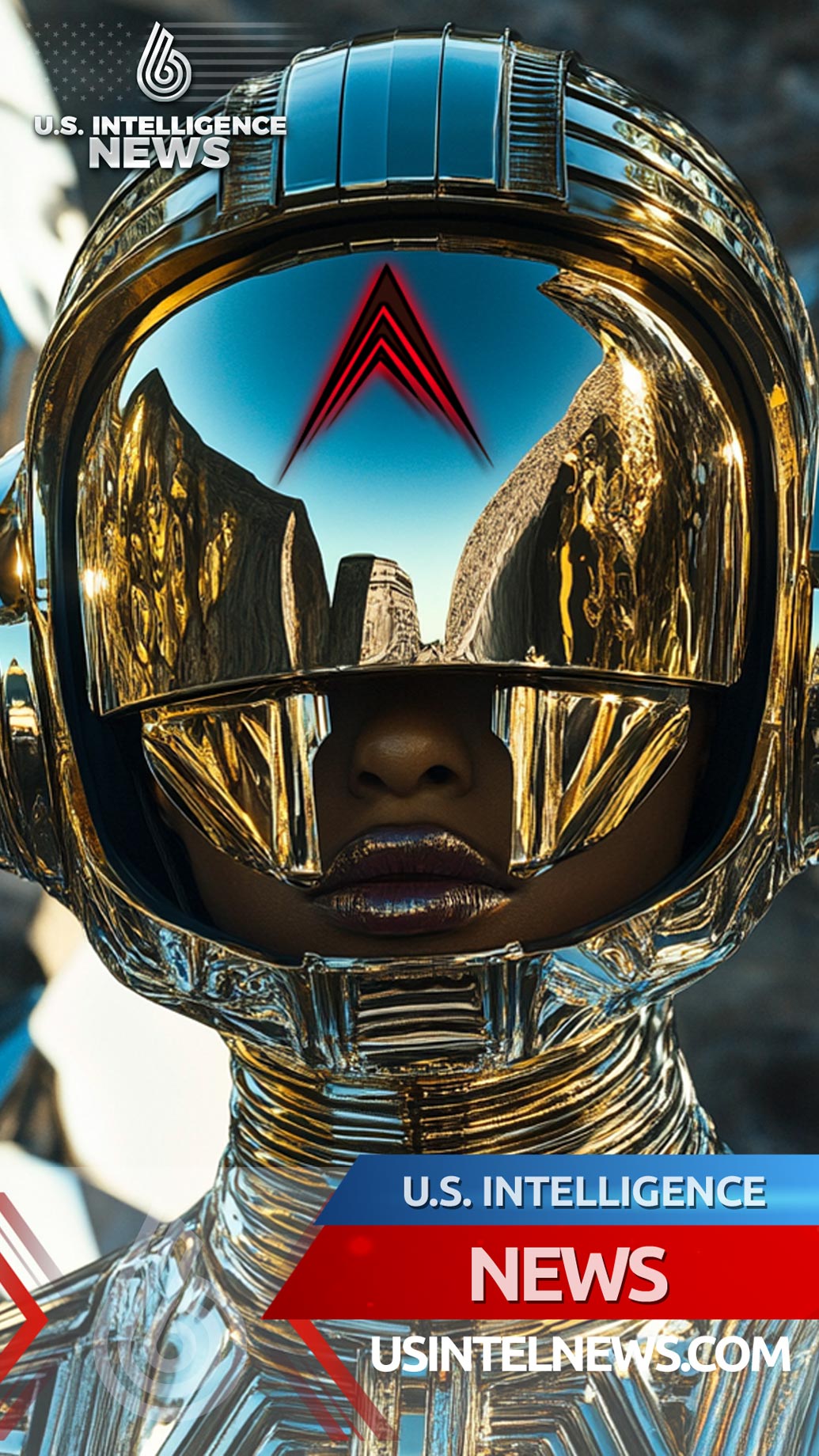
The U.S. Intelligence Community
Camp Hale Vail, Colorado
1:43 P.M. MDT
THE PRESIDENT: Thank you, thank you, thank you. (The President picks up a handheld microphone.) Is this one working? Hello, hello, hello. Not working, is it? Is this — can you hear me?
AUDIENCE: Yeah!
THE PRESIDENT: All right. Well, by the way, I — I wanted to come out here because I love being in Colorado. I love being in the West. I love even being in Alaska.
One of the things I was saying earlier to some of the folks that we came over with is that one of the great treasures we have are our national forests and our national parks. And from the time my kids were old enough to travel with me, I’ve taken them to most — almost every national park in the country — down to Colorado, down to Snake River, just everywhere — because I wanted them to see — I wanted them to see what so many people don’t get to see.
But, folks, I want to thank Scott for the introduction and mostly for his service. You’re right, this is the story of “America the Beautiful.” The way you talk about being a forest ranger is just — you just can just feel the power in this place when you talk about it.
And as you just heard, you have, the same way, these incredible leaders around you thanking you.
Governor Polis, he — Joe — Joe, I tell you what: I didn’t know that the former governor had worked for you. But Joe from the House, and John and Michael — all of you have been determined, over the years, to protect these sacred and historic lands.
And Michael came over here — I want — I want Michael to come back up here a second. (Laughter.) Come on, Michael. (Applause.)
And the reason why I do — I want to tell you what happened here. This guy, he made this finally happen — at least me signing this, certainly. And I — he came to the White House, and he said, “I told you what I need.” (Laughter.)
And I said, “I’ll do it.” You know why? I was worried he’d never leave the damn White House if he didn’t go. (Laughter.)
And I’m also honored to be joined by several Tribal leaders here, because this is your progeny, this magnificent land. You’ve been great stewards of these sacred lands.
But I just want you to know, the reason why he’s an environmentalist: He married one. Otherwise, he’d sleep alone. (Laughter.) So, I just want you to know that.
Look, it’s great to be with Tom Vilsack, Secretary of Agriculture; Brenda Malloy [Mallory], a Chair of our Council on Environmental Quality.
And while she couldn’t be here today, I especially thank our first Native American who is a Cabinet member, Deb Haaland, who is the Interior — Secretary of the Interior. (Applause.)
Folks, as I said, when I served as senator and Vice President, Jill and I made sure to take our children and grandchildren to national parks all around the country. They’re treasures and wonders that define the identity of us as a nation. They’re a birthright that we pass down from generation to generation. And they unite us.
And that’s what today is all about. We’re doing it not just for today, but for all the ages. And it’s for the people of Colorado, but it also goes well beyond the people of Colorado. It’s for all the people across America and the world. It’s a permanent, permanent decision — an action that no future President can overturn.
In 1906 — (applause) — President Theodore Roosevelt first used the Antiquities Act to designate a national monument. He essentially invented the national parks. Since then, Presidents of both parties have used the Antiquities Act to preserve America’s natural treasures, from the Grand Canyon, to the Statue of Liberty, to Colorado’s Canyons of the Ancients.
Today, we’re auth- — the authorities under the Antiquities Act, I’m establishing Camp Hale-Continental Divide National Monument today. (Applause.) This is the first new national monument of my presidency under this authority.
When you think about the natural beauty of Colorado and the history of our nation, you find it here: more than 50,000 acres, including the Tenmile Range; soaring peaks and steep canyons; black bears, bald eagles, moose, mountain lions; waterfalls, pristine rivers, alpine lakes; a scant [sic] — the scent of wildflowers at the right time of the year; and a stunning backdrop of ski slopes and iconic trails.
These treasured lands tell the story of America. For thousands of years, Tribal Nations have been stewards of this sacred land, hunting game, foraging for medicinal plants, and maintaining a deep, spiritual bond with the land itself.
But by the 1800s, mining activity and federal government drove out Indigenous Tribes from their homes. But those Tribes continued to use these sacred lands.
Last year, I issued a historic proclamation officially designating Indigenous People’s Day to honor the contributions of Native Americans — (applause) — to our society and acknowledge — acknowledge the history of violence committed against them.
Two days ago, we observed that day in this nation.
Today, I’ll be signing the proclamation to preserve these sacred Tribal grounds as a national monument.
It was also where the U.S. Army, as you’ve already heard, first and only mountain infantry division trained to take on the Nazis in World War Two.
The 10th Mountain Division was stationed on the valley floor, surrounded by rugged boulders, forests, and mountains stretching 14 feet high — 14,000 feet high, among the tallest mountains in America. Facing high altitudes and harsh terrain, deep snow, bitter cold, soldiers at Camp Hale learned to scale rock, ski, and survive, preparing for the war they were about to fight.
That pivotal moment came, as the senator pointed out, in February of 1945: a surprise Allied attack in the mountains of Italy. Imagine, it’s pitch black, punishing cold. The mission, high in the mountains, that hinged on the skill, strength, stamina that could have only been gained in a place like this.
They were more than ready. They were more than ready that day and since then. American soldiers of the 10th Mountain Division scaled that 1,800-foot cliff at night, caught the Germans by surprise, capted [sic] — captured key positions, and broke through the German defense line at a pivotal point in the war.
Just imagine — and I mean this sincerely. I say this as a father of a man who won the Bronze Star, the Conspicuous Service Medal, and lost his life in Iraq. Imagine the courage, the daring, and the genuine sacrifice — genuine sacrifice they all made.
After the war ended, Camp Hale became the hub for innovation in winter warfare.
And even when it closed in 1965, many veterans returned to the area. Some became scientists who studied rock glaciers, endangered animals, and wetland forests. Many returned to heal their wounds, both visible and invisible, seeking the solace and sovereign [sic] — and serenity in ways that only nature can do.
Other veterans returned to build world-famous ski resorts, as you all know, and outdoor recreational industries that define Colorado today — industries that support millions of American jobs, generate hundreds of billions of dollars for our economy, and provide countless, countless memories for families.
I taught my boys to ski here. I taught my family to ski here. I — it’s — and, by the way, as you all know, especially for us Easterners, we talk about that at dinner. We talk — no, I’m serious. All those memories — all those memories that you all understandably take for granted, they’re a big deal where I come from.
Today, as Commander-in-Chief, it’s a true honor to be joined by two of the few surviving veterans of the original 10th Mountain Division.
Francis Lovett. Francis — where is Francis? He’s going to come up later. (Applause.) Francis — as my mother would say, “God love you, man.” God love you. (Applause.) A hundred years young. Enlisted in the Army at age 20, stationed at Camp Hale. Fought overseas. Earned two Bronze Stars and — among many other medals. A war hero who came home to become a teacher and a principal.
Thank you, Francis, for your service to our country and all you’ve done to get this monument designated. Thank you. (Applause.)
He’s also joined by another 10th Mountain Division man, a guy named Robert Shoyer — 99 years young. Trained at this camp. Served his country before joining his dad’s business. Just a few years ago, he came back here to Colorado to be with his family.
Robert, thank you for your service. Thank you, thank you, thank you. (Applause.)
And I am honored — I’m honored to sign this proclamation to preserve this special part of our military history.
In addition, as Secretary Vilsack just explain — explained: Today, my administration is announcing steps to conserve the Thompson Divide, another 225,000 acres 60 miles from here. (Applause.)
This is another congressional priority for Michael, John, and Joe.
We’re standing with Colorado’s farmers, ranchers, hunters, and anglers, who for have forged generations to protect — protect the beautiful streams, aspen groves in the Thompson Divide area.
Let me be clear: There is no current or planned oil exploration, production in the area. We’re just keeping things as they’ve been for a long time — for the next 20 years — while we study — for the next years, while we study whether we can get this done.
In my first year in office, I protected more lands and waters than any American President since John Kennedy. After the previous administration — (applause) — after the previous administration rolled back protections, I restored full protection to three national monuments in Utah and New England. (Applause.)
And I signed and designated the Amache Japanese Incarceration Camp of World War Two as a National Historic Site in Southeastern Colorado. (Applause.)
We purchased additional land at Sand — at Sand Creek Massacre Site, outside of — outside of Denver.
And we did — and, by the way, I’m not sure I would’ve understood how important this was had I not gotten to seen — see these parts, until I understood the breathtaking nature of it. To stand there on the edge of the cliff in the Rio Grande, to — you know, looking at one thing, and it’s just — there’s not many cliffs. But then head up to the Grand Canyon; it’s a cathedral. I mean, it takes your breath away. I’ve climbed it from the river up and I’ve looked at it from the — from the top down. It’s breathtaking.
And I don’t think, until you see some of these things, do you understand why it was so important to continue to preserve.
And with the help of a member of Congress here today, I signed the Bipartisan Infrastructure Law and the Inflation Reduction Act that constitute the largest investment in climate ever in history — the history of the world. (Applause.)
We’re investing billions of dollars to protect our iconic outdoors, preserve our historic sites, and address the devastating inflacts [impacts] of climate change.
It includes historic funding for farmers and communities in the Upper and Lower Colorado River Basin so they can conserve water during the droughts. It includes historic investments in communities across Colorado to recover and rebuild from devastating wildfires.
And, by the way, to all the Forest Service and the firefighters, we owe you big. I’ve traveled, just in the last two years, over every major wildfire in America in a helicopter. You realize more land has burned to the ground than occupies the entire state of New Jersey — the entire state of New Jersey — from New Mexico to Washington State to Idaho, across the entire West. It’s devastating. And there’s so much more we have to do. There’s more that we have to do that really matters.
Let me close with this: Edward Abbey, a writer who once worked as a ranger in the Arches National Park in Utah, wrote — and I quote: “There are many such places. Every man, every woman carries in [his] heart and mind the image of the ideal place, the right place, the one true home, known or unknown, actual or visionary.”
We’re just at such a place here today.
And thanks to Michael Bennet, I now ask everyone who has worked so hard to help make this happen to be — join me as we sign this official proclamation declaring Camp Hale-Continental Divide National Monument.
God bless you all. And thank you for what you’ve done. (Applause.)
AUDIENCE MEMBER: Thank you, Mr. President.
THE PRESIDENT: No, thank you. Thank you all for fighting for this. I really mean it.
All right. (Applause.) Gentlemen, I sign this in your honor, the honor of all the warriors you fought with. Thank you. Thank you, thank you.
It says, the title, “The establishment of Camp Hale-Continental Divide National Monument by the President of the United States of America proclamation.”
(The proclamation is signed.) (Applause.)
2:00 P.M. MDT
The post Remarks By President<span class="dewidow"> </span>Biden On Protecting And Conserving America’s Iconic Outdoor<span class="dewidow"> </span>Spaces appeared first on The White House.


 Record Volumes of Russian LNG Replace Pipeline Gas in Europe
Record Volumes of Russian LNG Replace Pipeline Gas in Europe  Ethicoin: Learn Crypto Trading and Ethical Investing (The Ethicoin Trilogy Book 1) Kindle Edition
Ethicoin: Learn Crypto Trading and Ethical Investing (The Ethicoin Trilogy Book 1) Kindle Edition  Strategic Roadmap for Banks: Capitalizing on Ethicoin Amid Regulatory Challenges
Strategic Roadmap for Banks: Capitalizing on Ethicoin Amid Regulatory Challenges  Ethicoin (ETHIC+) Surges Amid Tether’s U.S. Investigation: A New Era of Ethical Cryptocurrency
Ethicoin (ETHIC+) Surges Amid Tether’s U.S. Investigation: A New Era of Ethical Cryptocurrency 


